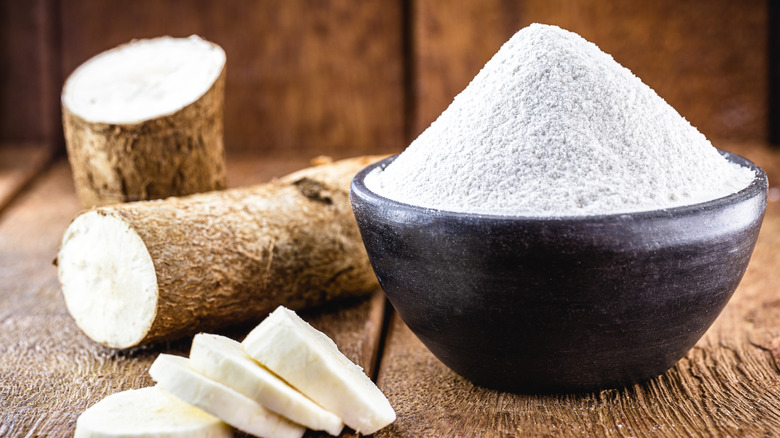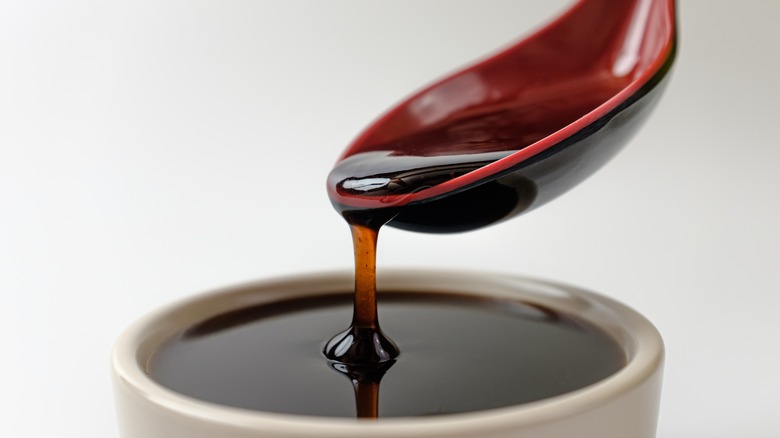The Ratio To Follow When Swapping Cornstarch With Tapioca Flour
Uncovering how certain sauces or fruity desserts get their thick consistency can seem like a mystery, but most of the time, cornstarch is the culprit behind it all. And yet, there are a few good reasons you may want to use tapioca flour (aka tapioca starch) instead. As opposed to cornstarch, tapioca flour retains its texture when frozen, meaning you can hold onto those sauces for longer. Plus, it doesn't require heat to soak up moisture and activate its thickening powers, making it one of the best substitutes for cornstarch.
You'll find more recipes that call for cornstarch than tapioca flour, but don't let this deter you — in most cases, you can swap out the former for the latter. All you need to do is follow a simple 2:1 ratio of two parts tapioca flour per one part cornstarch. While both of these ingredients come from different places (the cassava plant vs. corn), their similarities make them great substitutes. Both are gluten-free, have a slightly sweet, but mostly neutral flavor, and of course, are able to thicken a dish.
Try tapioca flour in fruity desserts and sauces
Using tapioca flour is ideal for food you intend to freeze, so feel free to deploy it in recipes like strawberry basil pie and pomegranate apple cobbler. It's also a great way to make a bunch of sauce ahead of time and store it until you're ready to use it, like with an at-home teriyaki sauce or a sweet and sour sauce. Plus, tapioca flour works well in any recipe that can't be heated up. However, there is one instance where you may want to stick to cornstarch: when you're boiling your food. We know that tapioca flour doesn't need heat to activate, but it also doesn't hold up well at high temperatures.
Most recipes with cornstarch will tell you to make a slurry by combining the ingredient with water (or milk) before pouring it into the dish. When you sub in tapioca flour, you'll want to follow the same process — all you're changing is the amount of the thickening agent. In a teriyaki sauce recipe, for example, you'll typically want to thoroughly whisk your tapioca flour with a little water, then add it in as one of the final steps in the cooking process so it can thicken everything up. If you're lucky, you'll stumble onto a recipe like blueberry-lemon tapioca pudding that's made with the ingredient in mind — but if not, now you know exactly how to wield it as a cornstarch replacement.

